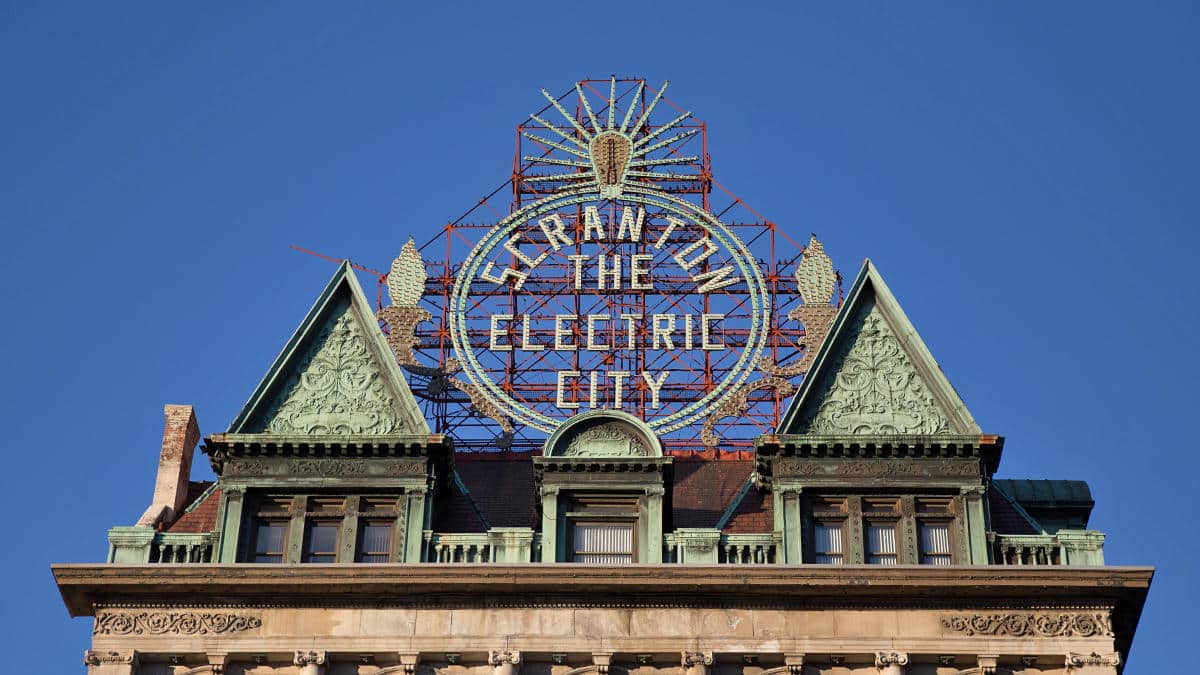 The city of Scranton took its first step toward earning its reputation as the “Electric City” on December 6, 1880. On that date, electric lights were introduced at the Dickson Locomotive Works. This was a true innovation. Thomas Edison had only recently improved the electric light bulb to the point that it was usable for commercial use, and he had received his patent just months before, in January of 1880.
The city of Scranton took its first step toward earning its reputation as the “Electric City” on December 6, 1880. On that date, electric lights were introduced at the Dickson Locomotive Works. This was a true innovation. Thomas Edison had only recently improved the electric light bulb to the point that it was usable for commercial use, and he had received his patent just months before, in January of 1880.
The Scranton family’s steel mill was the second plant to install electric lighting, which it did on February 23, 1881. The Dickson brothers installed electricity at their Dickson Works on Penn Avenue on October 21, 1882. These were all industrial establishments, and, in fact, establishments that were themselves known for innovation.
The public first saw electric lights demonstrated in the city of Scranton at an event called the Author’s Carnival, which opened on April 25, 1887. Its purpose was to raise money for the building fund of the Young Men’s Christian Association. This festival went on for a week and was thought to be the best social gathering of that time. People came dressed as different authors and their characters, and they did impressions of those characters for the crowd.
People say that New York native and theater owner Arthur Frothingham was the one who pushed for electric street lights. Before electricity, city streets were lighted by acetylene gas lamps – no more than a couple of hundred in all. Aside from Scranton, only Dunmore and Carbondale lit their streets. The other boroughs did not install street lights until electric lamps had become a tried and true innovation.
The first electric lights in Scranton were arc lamps. They were followed by incandescent bulbs. In the early days of electricity, electric illumination was under the control of a number of companies, with a few of the mid-valley towns operating plants of their own. W.W. Scranton, then head of the Scranton Gas & Water Company, was instrumental in building the first electric power plant along the Lackawanna River. Scranton Select Council passed the Peoples Electric Light and Power Co. ordinance in the summer of 1883, allowing for the regulation of electric power. Postcards from the era show Lackawanna Avenue at night, lit by scores of electric bulbs. Their captions refer to the avenue as the “Great White Way.” Scranton was truly electrified.
 But lights were not the only innovation in electricity. Electric streetcars were introduced by E.B. Sturges in 1886. It was recognized as the first system in the country to run exclusively on electric power. The street cars were themselves illuminated with incandescent bulbs.
But lights were not the only innovation in electricity. Electric streetcars were introduced by E.B. Sturges in 1886. It was recognized as the first system in the country to run exclusively on electric power. The street cars were themselves illuminated with incandescent bulbs.
In 1900, most of the power plants were consolidated under the name of the Scranton Electric Company. Some years later, it was taken over by the American Gas & Electric Company. Electric power made its greatest strides in development with Duncan T. Campbell as manager of that company. During his tenure, they acquired control of all operating companies in the Lackawanna Valley between Pittston and Forest City. The one exception was the municipal plant in Olyphant.
By the 1920s, electricity had been installed in many homes, and thousands of incandescent bulbs lit the valley.
The credit for bestowing its nickname upon Scranton goes to Rev. David Spencer, D.D., one-time pastor of the Penn Avenue Baptist Church. Taking stock of the success of the city’s electric trolley system, and looking upon the industries, households, and streets illuminated by electric lights, Rev. Spencer proclaimed Scranton The Electric City – a name it has proudly carried through its history.

